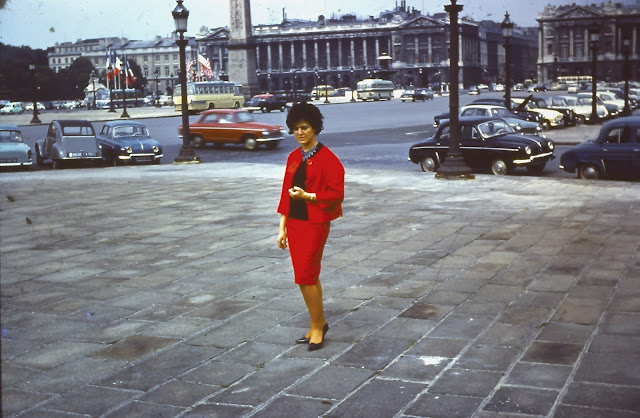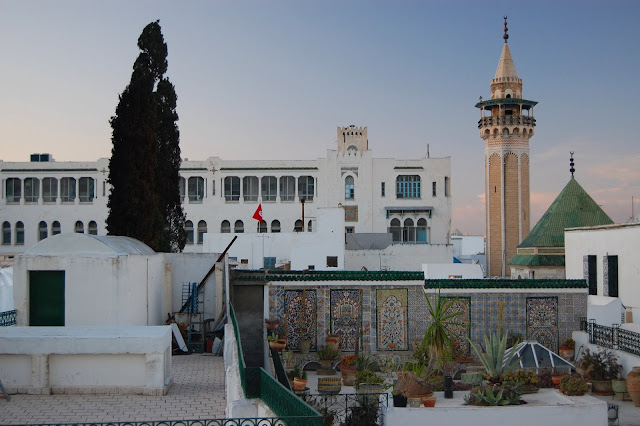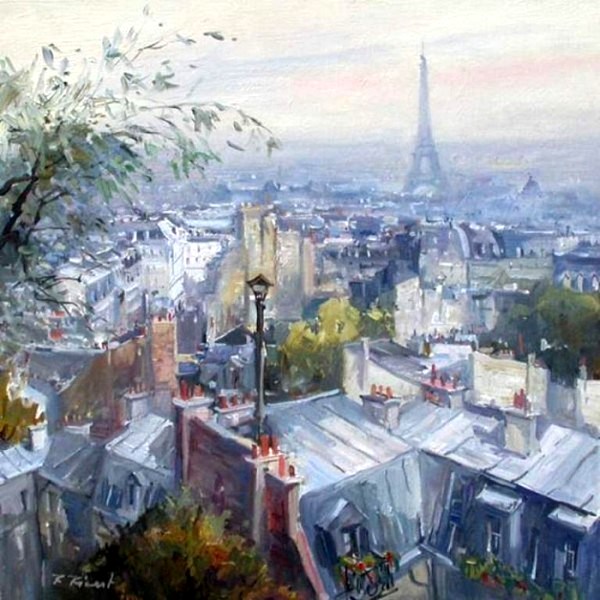As I mentioned in part 1 of this post, I found a job at the beginning of 1962. In the spring of 1962 my roommate decided to leave the apartment and move in with her Japanese boyfriend. I had met Patrick's sister in Great Falls and she decided to come to San Francisco and stay with me for a while and work. We got along well and I was pleased for the company (she is in the collage below) and to share the $90 monthly rent. Then in June of that year Patrick decided to finish his studies in San Francisco for his college degree and come and join me in July. We choose to get married so we could live together - this was the 60s after all and our families would not have approved cohabitation. We were married on 14 July 1962 at St. Mary's Cathedral in San Francisco. Patrick's parents were Catholic and wished for us to have a religious wedding and my sponsors were hoping that an Armenian Orthodox priest would also be there - both a Catholic and Armenian priests were there that day. I don't have a picture of the cathedral but just a vintage postcard, shown below. We then rented a small apartment at 4170 17th Street in the Castro area of San Francisco. I commuted to work on the K street car.
In the summer of 1963 we went back to Great Falls for vacation. This time Patrick had gotten a large Cadillac from a friend - it was quite comfortable. Patrick's parents also owned a small cabin in the mountains and from there we went to visit Glacier National Park. Coming from Paris and having been to the seaside and other cities mostly, I was enthralled by the beauty of the mountains and the majesty of the landscape. This was nature on an epic scale.
Glacier National Park is one of the most beautiful parks in the United States. It sits in the Rocky Mountain Range on the Continental Divide and borders Waterton Lakes National Park in Canada. All around us were alpine lakes, soaring peaks, wildlife, wildflowers and more. We drove to Waterton as well. On the way back we stopped in a "ghost town" - which was like walking back in time to the real west, indeed.
For the 14 of July 1964 an Eiffel Tower was erected in Union Square in San Francisco. It was fun seeing it there, together with a French cafe and even an accordionist.
But Patrick and I were not getting along too well. We had gone to a wedding and taken a nice portrait but then I went back to France to think. My father who had been very upset about my leaving Paris was pleased to have me back and asked me to fly to Cairo, Egypt, to visit his sister, my aunt, all expenses paid. I stayed with my aunt and uncle for a couple of weeks and had a great time in Heliopolis. My cousins spoke Armenian, Arabic, French, English and German and could read the heliographic alphabet. They took me to places where tourists did not go and read the writing for me on the ancient tombs. Below is the portrait and pictures from Cairo.
I seriously thought about staying in Paris for good but Patrick and I had corresponded by mail while I was in France (there was no Skype, email or cell phones then) and we decided to try to patch things up. I went back to San Francisco. Patrick obtained his degree and went to the University of California in Berkeley to study for his Master's Degree - he moved into a single apartment near the university. My best friend Virginia was also studying in Berkeley at the time, so I moved in with her, near Durant Avenue and attended the university part-time at night (I was still working.) But, maybe because of the stress, I started to get sick. I moved back to San Francisco and rented a studio on Hermann Street, near the U. S. Mint, to be closer to work, avoid the tiring commute and also be near my doctor. I had to stay in bed for two weeks. Luckily a friend from the office lived close by and brought me some food in the evenings. By my husband and I filed for divorce (Patrick is below with a moustache now.)
I guess we both were to blame - we were very young, away from families, and with different temperaments and culture - misunderstandings were unavoidable. Parting was not easy. But it helped to live in beautiful San Francisco. Below is an old slide from that time period (and it shows...)
Count your garden by the flowers
Never by the leaves that fall
Count your days by golden hours
Don't remember clouds at all. (Anonymous)
Fortunately I had made some good friends at work, like my best friend Vince Middione, who also lived close to my studio with his partner Garth, and was a divine cook. Another friend from the SF Art Institute, George Smith (whose address I unfortunately lost) was cheerful and would go and drink coffee with me in the old Italian coffee houses on North Beach. Another friend, Roland, was an artist and we enjoyed discussing art. Mary Spears was quite funny and would crack me up constantly. Friends helped me feel happy again. From top going clockwise: Roland, George and me, Mary Spears and Vince.
My studio was on 77 Hermann Street (building shown below) and was on the same hill as the U. S. Mint. I had painted the kitchen blue. I also had a pet bird, a parakeet, that I named Dimitrios (after the mystery "A Coffin for Dimitrios" by Eric Ambler.) I had taught Dimi to speak, he would say "Hello! How are you?" and "Bon Appetit."
Another friend from work, Jim, would also go on outings with George and me. Once we went on a hike in Emigrant Basin. We went by the Gianelli trailhead in the wilderness area. The Emigrant Wilderness is part of Stanislaus National Forest in the Sierra Nevada and offers outstanding scenery. In 1852 it was used as a wagon route. It borders Yosemite National Park. It consists of granitic ridges, sparsely vegetated with small lakes and meadows. It is about 140 miles (230 km) from San Francisco. Below are George and Jim on the left and my slides from the Emigrant Basin.
Jim had an MG TF 1500 sport car and we would go to rock concerts in the Bay Area. His friend, Marvin, was a close friend to several members of the group "Big Brother and the Holding Company" whose singer, Janis Joplin (1943-1970,) became a part in 1966. Jim would go and visit Marvin where he would meet these musicians and also Janis. I did not meet her but saw the group in several concerts. I had many of the psychedelic posters advertizing these concerts (am not sure where they are now.) Below are some of the posters, Jim and Leslie on the left, Janis Joplin and members of the band, Janis on the right and Jim's MG.
Jim had bought two 1930's leather pilot headgears to wear in his MG when he lowered the windshield, as you can see above. When I wore the headgear I also placed a long white silk scarf around my neck that would float in the wind. It was a lot of fun and people would smile at us on the road. I still enjoyed listening to jazz and went to the San Francisco Opera but I bought many 33 LP albums of the rock groups from that era. I gathered some below (some are collector items now.)
By then it was 1966 and the "Flower Children" were in the Haight-Ashbury area of San Francisco. I was not a "hippie" but I did believe in many of what they embraced: peace, love and freedom and be friends with everyone regardless of color, sex, faith, lifestyle and country of origin. Both Jim and Leslie attended San Francisco State College where Steven Gaskin taught. Actually, later on in 1970, Gaskin and his wife Ina May Gaskin would lead a caravan of 60 buses, trucks and van across country to speak and would end up buying land in Summertown, Tennessee and create a commune. Leslie went with them and we visited him at The Farm several times in the last couple of years when we drove to Tennessee. The Farm now is still going strong, but no longer as a commune but as a cooperative "intentional community." I wrote a couple of posts on it, click on "Visiting our Friends from the 60s at The Farm." Back in the days I would wear flowers in my hair sometimes, but they did not stay put too well. Because of the wind I wore small scarf-type hats that I had sewn as you can see below where I am sitting near a little neighbor.
So my friend Leslie became a full hippie, but not what people believe "hippies" were - untidy, dirty, unkempt and druggies. He believed in the philosophy. The youth then had more of a utopian view of society than they do now - the youth now are much more materialistic. Society may look down on the hippie movement, but they have benefited from it. You could not protest in public then without being arrested as Mario Savio was in Berkeley in 1964 - there was little public freedom of speech. The hippies stressed recycling and they were considered freaks - humane treatment for animal? that was considered weird then by the general public - whole grains, organic (biologique in French) and natural food? that was considered outlandish then but a healthy diet now.
How about clean water? that was considered eccentric since people thought that there always would be clean water in the US, no need to talk about the environment, and if you did, you were an extremist. It would have been better if society had listened more carefully to the hippies then to look at the problems we face now, but the hippie movement was also disorganized. Other protests were against the Vietnam War. Robert McNamara, who was Secretary of Defense at the time, confessed in his book of memoir "Retrospect" that the war had been futile and wrong, terribly wrong. On April 15, 1967, a march called "Spring Mobilization to End the War" (MOBE) was held in San Francisco. More than 100,000 people marched from Market Street to Kezar Stadium in Golden Gate Park - people from all walks of life and families too. There were performers at the stadium in the afternoon including Big Brother and the Holding Company, Quicksilver Messenger Service, and an appearance from Coretta Scott King, wife of Martin Luther King, Jr. My friends and I marched. I took many slides - below are some of them.
I am convinced that if we succumb to the temptation to use violence in our struggle for freedom, unborn generations will be the recipients of a long and desolate night of bitterness, and our chief legacy to them will be a never-ending reign of chaos." - Martin L. King, Jr. 1957 (1929-1968.)
More to come in part 3.





















































